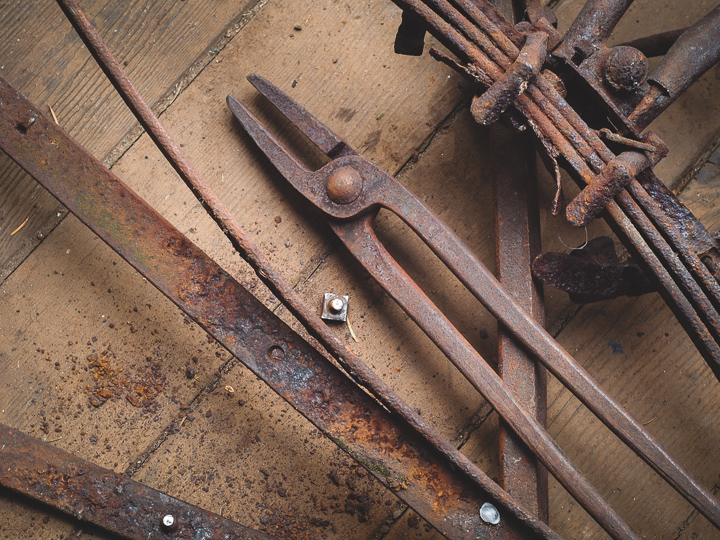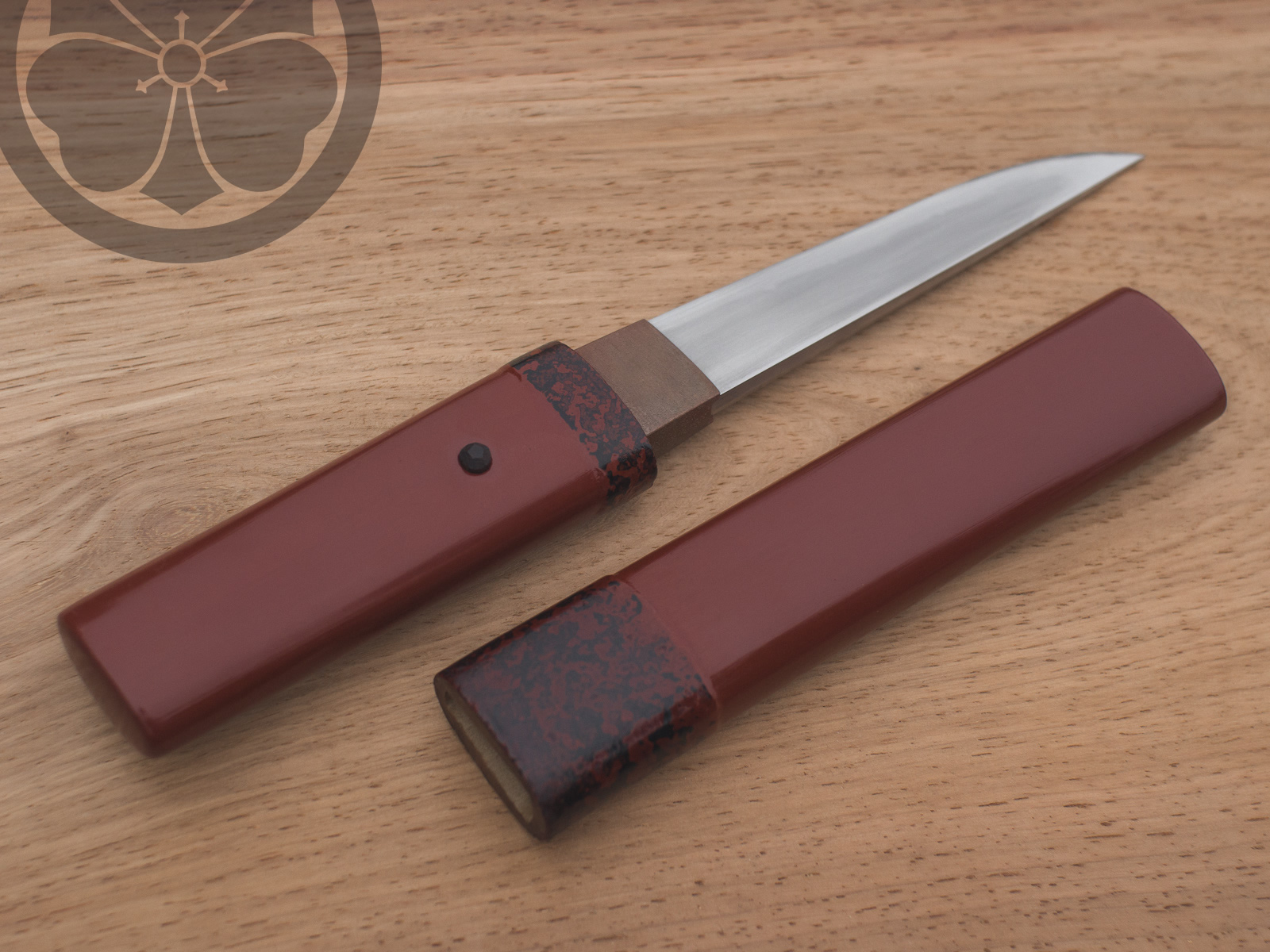Futokorogatana (懐刀) is translated as “clothing fold sword” and describes a type of tanto mounting meant to be carried in the kimono sleeve or fold. Also known as kaiken, this humble style of hidden mounting is usually unadorned with a smooth profile and lacquer finish. This knife would historically be carried for last chance survival situations.
The kaiken tanto was designed to be carried in the fold of a kimono and is characterized by a smooth profile and unadorned lacquered exterior.
scroll down or jump to the sections below:
Blade
Habaki
Tsuka & Saya
Urushi
Mekugi
Forging the Blade






Making the Habaki

Carving the Tsuka & Saya




Urushi





Making a Mekugi




